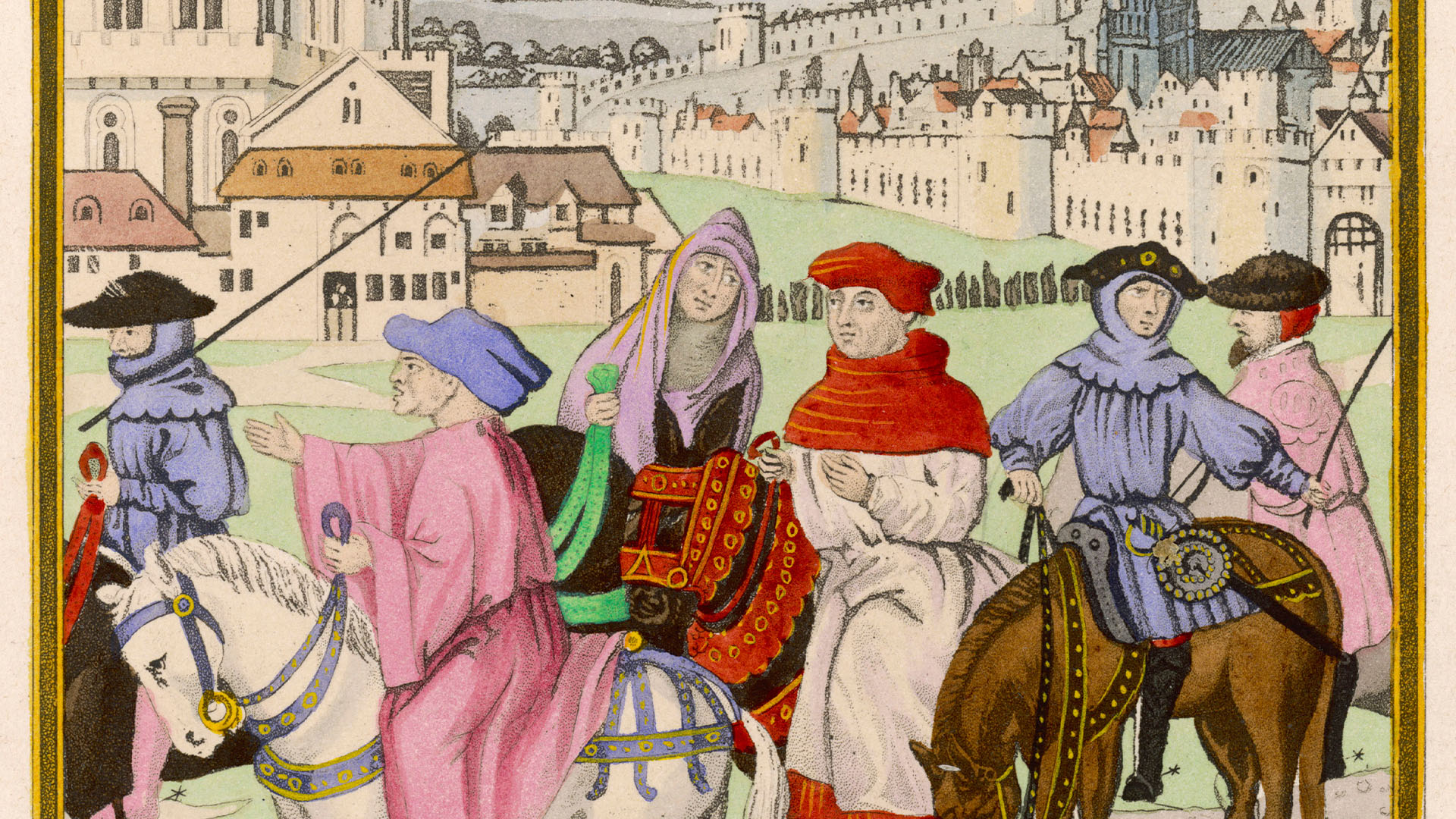
The poet
Line by line


The Millere was a stout carl for the nones.
Ful byg he was of brawn and eek of bones.
That proved wel, for over al ther he cam,
At wrastlynge he wolde have alwey the ram.
He was short-sholdred, brood, a thikke knarre;
Ther was no dore that he nolde heve of harre,
Or breke it at a rennyng with his heed.
His berd as any sowe or fox was reed,
And therto brood, as though it were a spade.
Upon the cop right of his nose he hade
A werte and theron stood a toft of herys,
Reed as the brustles of a sowes erys.
His nosethirles blake were and wyde.
A swerd and bokeler bar he by his syde.
His mouth as greet was as a greet forneys;
He was a janglere and a goliardeys —
And that was moost of synne and harlotries.
Introduction to the Miller
General Prologue to The Canterbury Tales, c.1370, lines 545–561
It is the fourteenth century and at the Tabard Inn in Southwark—a real inn, located in England roughly on the site today of 65 Borough High Street, quite near London Bridge—an eclectic group of characters meet as they prepare to embark on a pilgrimage to Canterbury Cathedral. This is our introduction to the Miller, one of the more colourful pilgrims (quite literally, his beard is as ‘reed’ as a fox).
The sheer physicality of the Miller in this extract from Chaucer’s Canterbury Tales is glorious. The first thing we are told is that he is a ‘stout carl’ (fellow), ‘ful byg’, and that he always wins first prize in wrestling competitions. He sounds almost heroic. Until, reading on, we learn that he has a particular talent for knocking down doors by ‘rennyng’ (running) at them with his head. If he is beginning to sound less appealing, we then discover there is a prominent wart on his nose, sprouting a ‘toft of herys’. Chaucer doesn’t leave it there; he relishes explaining to us that these hairs are just like the bristles in a sow’s ears. The Miller’s mouth is like a ‘greet’ furnace: physically huge of course, and also because he is a ‘janglere’ (gossip). I love the onomatopoeia of that word. By the end of the extract, we are in no doubt that the Miller’s physical ugliness is matched by his moral turpitude, and in fact the former is commonly an indicator of the latter in medieval English literature.
Geoffrey Chaucer (1343–1400) is often called the father of English literature, because he was one of the earliest—and most prolific—writers to adopt the vernacular for literary use, rather than the courtly language of French or Latin. And in this extract Chaucer digs deep into the vernacular, using guttural, Anglo-Saxon words that emphasise the Miller’s coarseness. It is an extraordinary development, and yet on one level you can simply laugh and enjoy the cartoonish delineation of a character that is no less comic 650 years after Chaucer put quill to vellum.
© Norton Rose Fulbright LLP 2025